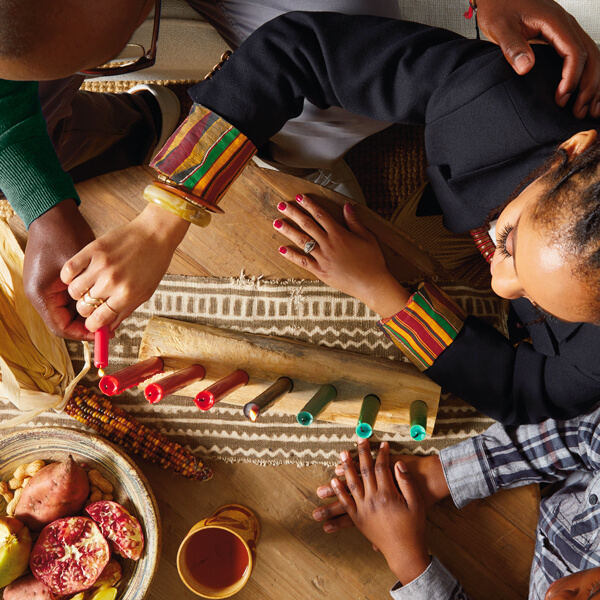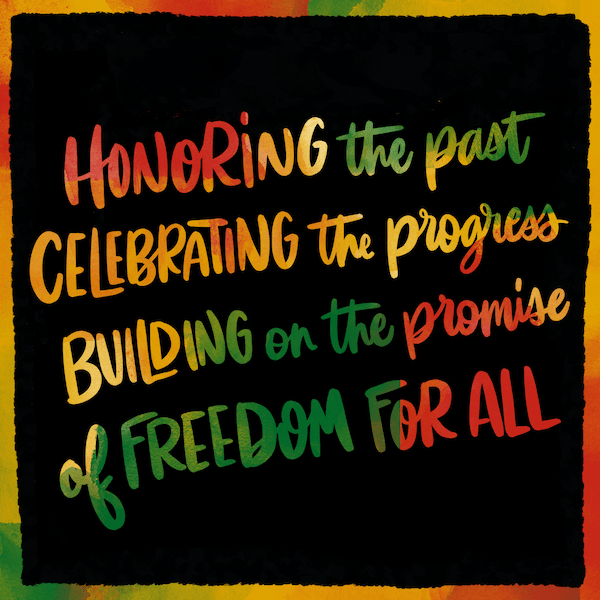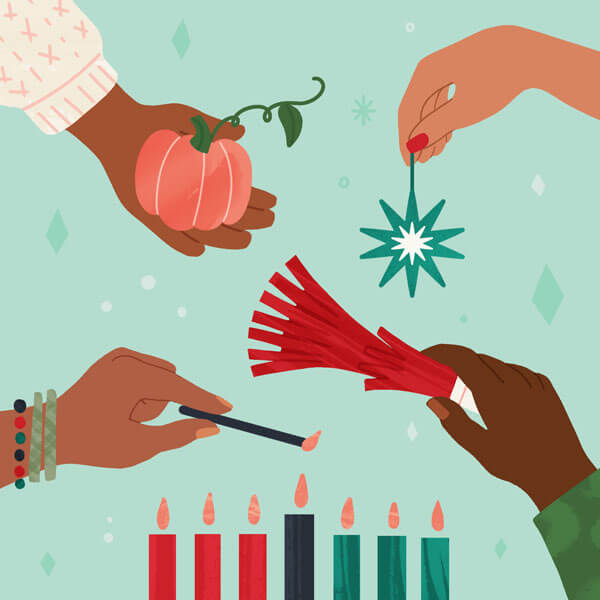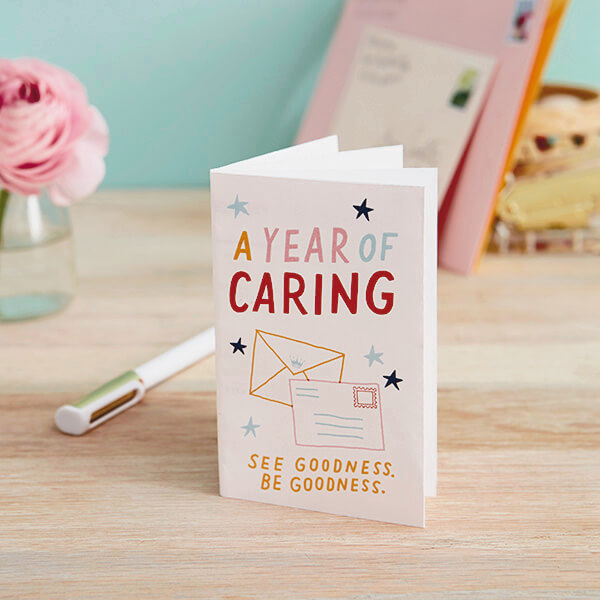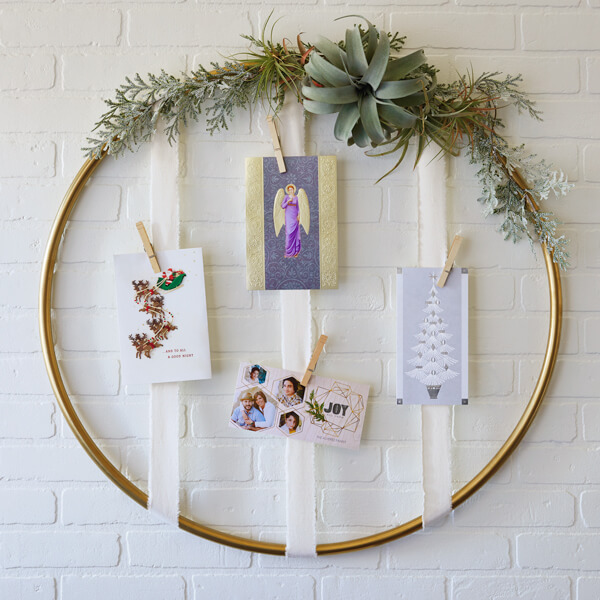How to Welcome Your Child’s LGBTQ Partner to the Family

You’re the proud parent of a newly engaged LGBTQ person: Congratulations! You’re happy for them, excited about the wedding—and maybe a little unsure about what comes next. If you have questions about welcoming your child’s LGBTQ partner into the family, we have some tips.
Inspired? Create and share by tagging @hallmarkstores.
Relax—you’ve got this
Perhaps this is your first foray into in-law territory and you want to get it right. Or you’re not sure how an LGBTQ wedding is different. And, of course, you want the new couple to feel welcome in your home and comfortable around your family and close friends.
Good news: If you’re racking your brain for ways to make someone feel at home, your heart’s already in the right place. Here are some simple, thoughtful ways you can show your support.
Ask questions
As every couple does, these two will want their engagement and wedding to reflect their unique relationship. From the wedding showers to the venue, who officiates, their vows, and their attire—every choice is an opportunity to express themselves and their love for each other.
When you think about how many wedding traditions are based on gender roles, it’s easy to see where differences might arise:
- LGBTQ couples likely have a wedding shower, not a bridal shower—and both probably attend.
- They might walk down the aisle together—or not at all.
- Their wedding parties may have multiple genders on both sides.
From parents’ roles in planning to the first dances, they’ll have a lot to figure out. Ask what role they’d like for you to play and how you can support them.
Language is also important when describing LGBTQ relationships. If you’re not already aware, you can ask about:
- Which gender pronouns they use
- Whether they want to use gendered terms like “bride” and/or “groom”
- Their titles, for example, Mr., Mrs., Ms., Mx.
- The last name or names they’ll use once they’re married
And don’t hesitate to do some research of your own, so the couple doesn’t carry the entire emotional load. All marriages encounter challenges and frustrations; educate yourself about what makes an LGBTQ relationship unique and you’ll be in a better position to offer support.
Share your traditions
From favorite summer menus to elaborate holiday customs, we all have traditions that make us family. The more you share, the more welcome your newest member will feel. And that’s especially important when who a person is and who they love don’t always meet with universal acceptance.
Through simple actions and big gestures, you can make your child’s fiancée feel included and loved. Here are some ideas:
- Be open-minded about roles and traditions that may have been gender-specific in the past. It may be time to welcome a new face in the kitchen or around grill.
- Include both names on any card you send—“Dear Lindsay and Cady”—to truly acknowledge their partnership. Include them on family text chains and emails, too—and understand if they opt out.
- Ask questions instead of making assumptions about what family activities they do and don’t want to participate in—and err on the side of making an invitation. Extend the invitation directly: “Cady, we really look forward to seeing you at Christmas.”
- Asking about their needs—from dietary restrictions to faith customs to their own family traditions—lets them know you care about them.
- Share the secrets: family recipes, inside jokes, handed-down histories, funny stories. Do everything you can to make your new in-law feel included.
Celebrate!
Weddings are celebrations of dedication, love, and the joining of families. This is surely one of the biggest events in your grown-up child’s life and should be met with the open, unabashed enthusiasm and admiration as every family wedding.
While acceptance for LGBTQ relationships continues to grow, positive words from family and allies still matter. Right from the start, let the happy couple know you’re on their side and proud of their relationship and commitment to one another. If they’re comfortable with it, share photos of their happy moments with friends in person and in social media.
After the big day, continue to support them, offer encouragement, and share their joys—and struggles. Marriage isn’t always easy, and they will appreciate having family in their corner.
Perhaps the best advice to anyone welcoming a child’s partner to the family is to see what your child sees in them. They’ve fallen in love with someone who’s changed their world for the better. And now, that wonderful person is a part of your family. Lucky you!
Shop LGBTQ
See allYou may also like
See more-
Christmas Sweet dreams, Santa!
Catch Santa napping on the job with this Snoring Santa Keepsake Ornament featuring sound and motion. With every snore...
-
Kwanzaa What is Kwanzaa?
What is Kwanzaa? A festival of lights rich in African symbolism, it takes place each year from December 26th through ...
-
Christmas Advent calendar activities for adventurous families
It’s time to start the countdown. Maybe it’s about being mindful…or counting your blessings…or preempting your kids a...
-
Summer Ways to celebrate Juneteenth
While Juneteenth was officially recognized as a federal holiday in 2021, this pivotal moment in history has been cele...
-
Christmas Christmas and Kwanzaa: Keeping family holiday traditions and finding your own
Whether you’re single or starting a family, religious or agnostic, someone who celebrates Christmas and Kwanzaa or ju...
-
Halloween Make ghosts and goblins feel right at home this Halloween
Light up your home with haunting Halloween seasonal decor. 🎃👻 Shop now at Hallmark Gold Crown stores or at Hallmark.com.
-
Halloween No scaredy cats around here!
When this black cat crosses your path, you know fun can't be far behind. 😻 🧙♀️ Shop the Zip-A-Long Cat in Hallmark G...
-
Halloween While you’re waiting for The Great Pumpkin this Halloween…
Fly around the pumpkin patch with Zip-a-long Snoopy! 🎃 Shop more frightening finds in Hallmark Gold Crown stores and ...
-
Halloween Light up the night with frightful fun!
Could it be? Could it be!? Yes it is! It’s the Peanuts® Snoopy and Woodstock Halloween figurine! 🎃 🐶 Find it and more...
-
Halloween Where cozy meets mischief and magic
Make some magic this Halloween with this Hocus Pocus hooded blanket. 🧙♀️👻Find more Halloween essentials in Hallmark ...
-
Gifting Relive a favorite from your childhood!
Fill your home with a few small joys inspired by Disney’s “It’s a Small World” 🩵🎎 Shop the collection at Hallmark Gol...
-
Halloween Which house will you be sorted into?
The Harry Potter™ Sorting Hat™ Mug plays sound whenever you lift the lid. Find this chatty mug in Hallmark Gold Crown...
-
Encouragement How to support caregivers
It’s often hard to know how to support a caregiver. Most caregiving checklists out there hit the major topics like me...
-
Love 50 different ways to say I love you
You don’t need to wait for a special occasion to remind that certain someone how much he or she is loved. Spice up yo...
-
Graduation 15 graduation quotes
Celebrate your favorite grad’s milestone with the wit and wisdom of Hallmark writers, fans and others. We’ve rounded ...
-
Congratulations How to congratulate someone
Congratulating others is easy and fun, right? Like when your friend worked really hard and got that awesome job makin...
-
Care & Concern Be more caring with a kindness journal
It's obvious the world could use more kindness. So this year, why not make "be more caring" your number one resolutio...
-
Fall Día de Muertos: A celebration of life and love
Día de Muertos, Day of the Dead, is a holiday originally celebrated in the southern and central parts of Mexico and i...
-
Card Ideas Card messages for kids: What to write in a kid’s holiday card and more
My 3-year-old was having a hard time at preschool drop-off. Dragging his feet. Asking to stay home. This went on a fe...
-
Christmas 6 Creative Christmas Card Display Ideas
Holiday card season is here: Our mailboxes are about to fill up with festive envelopes with pretty stamps and familia...


